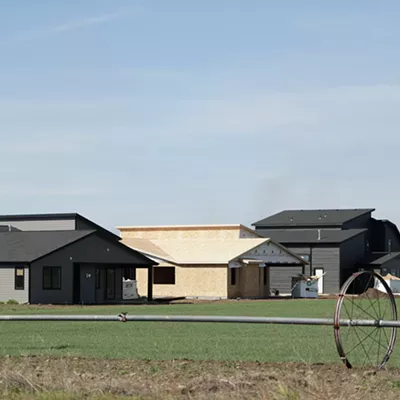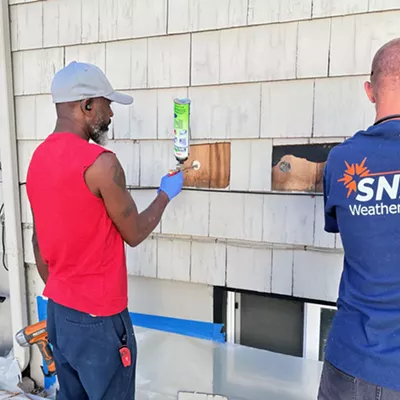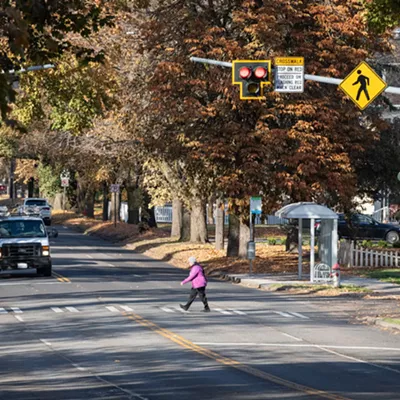Setting aside for the moment all the complicated business deliberations that went into the site selection for the convention center expansion, siting the structure to the east of the existing convention center, rather than to the south, fails miserably from an urban design perspective.
The opportunity to build such a structure will never come our way again -- not in our lifetimes, at least.
Let's grant that the east site gives us more bang for the buck -- more floor space and easier access for trucks, all for less money. It doesn't make any difference. To paraphrase Lyndon Johnson, "I could have whittled me" a better site.
Sometime after the Challenger blew up, NASA handed out a number of awards to those who had worked on the project. The agency deflected criticism by pointing out that except for the O-ring failure, the other 30,000 parts worked just fine.
You get the drift: Mess up the urban design decision by reducing things down to a real estate deal, and who cares about the other 30,000 parts?
Here is just a partial listing of what's so wrong with this oh-so-crucial decision:
* Walt Worthy, who gave the city back its history and architectural soul, objects to the siting for obvious reasons. His objections should not be dismissed as just so much self-interest. The entire community has a stake in the success of the Davenport Hotel. Political decisions that might go any of several ways under the law should grant preference to the health of the Davenport -- even if it means taking a less-than-preferable real estate deal.
* From all the data produced so far, those involved in the actual convention business, both as producers and patrons, preferred the south location, also for obvious reasons: It is closer to downtown shopping, more walkable and keeps the river accessible. Surely we can agree that the ease and comfort of the conventioneer would be better served if walking distances within the facility itself were reduced by half.
* Urban design isn't just a matter of "merely aesthetic niceties." Urban design affects all public life, and it is public life -- life downtown, life on the street -- that is at stake. First, we seek, in the words of Jane Jacobs, density without crowding: A critical mass of activity and street life can be contagious. This is what we need, and this need should have been a pivotal criterion in the siting deliberations. We're struggling even to reach that critical mass, let alone maintain it. Arguably the River Park Square Mall, combined with our skywalk system, has made this an even more daunting challenge: More and more people go downtown without ever seeing the light of day once they're down there. Witness the closure of Cucina! Cucina! and the expected move of Rock City Grill into the downtown mall. Were we to construct the new convention center to the south, we actually could address this problem.
As Christopher Alexander observes in his classic book, The Pattern Language, shoppers need good pedestrian access -- paths and sidewalks all, ideally, filled with people on similar quests. The south site offers us an imaginative solution to a troubling problem. If so constructed, River Park Square could be effectively transformed, along with the Davenport District, as a kind of anchor tenant in the downtown, with the Opera House and convention center complex being the other anchor. Our on-street businesses in between would benefit, as would small shops located in malls. Imagine! We would have come up with a whole new concept: street life within the concept of a classic mall design. In effect, we'd be accepting "life at the mall" while reconceptualizing the very idea of the mall.
* Size and scale are critical to good urban design. By breaking up the Opera House/Ag Center monolith through the south site location, we reduce both, thus making the entire complex closer to human scale. Alas, the authorities have chosen to do just the opposite. When this entire complex is completed, it promises to have all the charm and pedestrian accessibility of O'Hare Airport.
* Alexander also speaks to the need for what he terms "Activity Nodules" and observes that "community facilities scattered individually throughout the city do nothing for the life of the city." As a result, "public life is spread so thin that it has no impact on the community." The east location presents just the problem Alexander counsels us to avoid.
* Many students of urban design have addressed the importance of maintaining views of and access to what Alexander terms "sacred places." Rivers and lakes, so implies Alexander Garvin, in his book, The American City, fall into that category. Garvin reviews the efforts made in cities such as Boston, New York, Minneapolis and Kansas City, to protect access and view corridors of these waterways.
Actually, as U.C. Berkeley architect Daniel Solomon observed, Riverfront Park largely fails in its original design to provide good view corridors; our river doesn't so much beckon as waits to be discovered. The east site for the convention center worsens this already disappointing visual situation. The general public will look south to the river, or west even, and see only a wall of concrete. This is not good.
While I applaud the political breakthrough that made the city-county deal possible, as I reflect on the recent siting decision, I can't help but think about those 30,000 parts on the Challenger, all of which worked perfectly.
Comments? Send them to letters@inlander.com
Publication date: 09/18/03
















